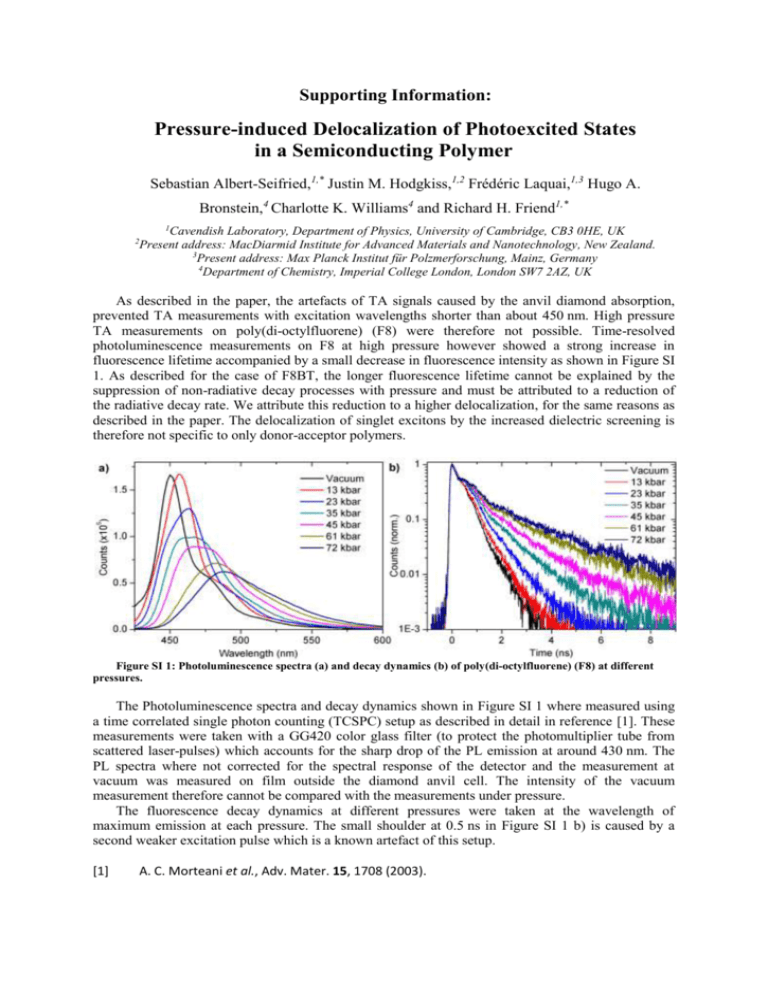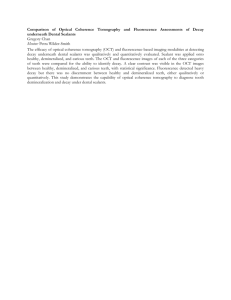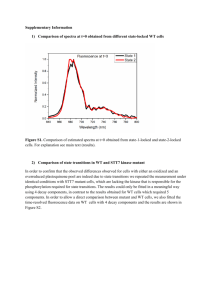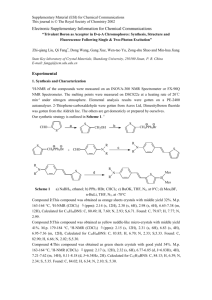Supporting_Information_2
advertisement

Supporting Information: Pressure-induced Delocalization of Photoexcited States in a Semiconducting Polymer Sebastian Albert-Seifried,1,* Justin M. Hodgkiss,1,2 Frédéric Laquai,1,3 Hugo A. Bronstein,4 Charlotte K. Williams4 and Richard H. Friend1,* 1 Cavendish Laboratory, Department of Physics, University of Cambridge, CB3 0HE, UK Present address: MacDiarmid Institute for Advanced Materials and Nanotechnology, New Zealand. 3 Present address: Max Planck Institut für Polzmerforschung, Mainz, Germany 4 Department of Chemistry, Imperial College London, London SW7 2AZ, UK 2 As described in the paper, the artefacts of TA signals caused by the anvil diamond absorption, prevented TA measurements with excitation wavelengths shorter than about 450 nm. High pressure TA measurements on poly(di-octylfluorene) (F8) were therefore not possible. Time-resolved photoluminescence measurements on F8 at high pressure however showed a strong increase in fluorescence lifetime accompanied by a small decrease in fluorescence intensity as shown in Figure SI 1. As described for the case of F8BT, the longer fluorescence lifetime cannot be explained by the suppression of non-radiative decay processes with pressure and must be attributed to a reduction of the radiative decay rate. We attribute this reduction to a higher delocalization, for the same reasons as described in the paper. The delocalization of singlet excitons by the increased dielectric screening is therefore not specific to only donor-acceptor polymers. Figure SI 1: Photoluminescence spectra (a) and decay dynamics (b) of poly(di-octylfluorene) (F8) at different pressures. The Photoluminescence spectra and decay dynamics shown in Figure SI 1 where measured using a time correlated single photon counting (TCSPC) setup as described in detail in reference [1]. These measurements were taken with a GG420 color glass filter (to protect the photomultiplier tube from scattered laser-pulses) which accounts for the sharp drop of the PL emission at around 430 nm. The PL spectra where not corrected for the spectral response of the detector and the measurement at vacuum was measured on film outside the diamond anvil cell. The intensity of the vacuum measurement therefore cannot be compared with the measurements under pressure. The fluorescence decay dynamics at different pressures were taken at the wavelength of maximum emission at each pressure. The small shoulder at 0.5 ns in Figure SI 1 b) is caused by a second weaker excitation pulse which is a known artefact of this setup. [1] A. C. Morteani et al., Adv. Mater. 15, 1708 (2003).











